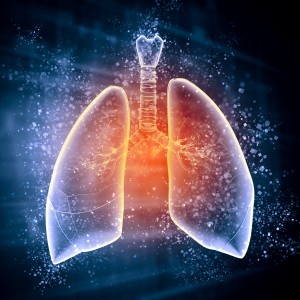 Researchers at the University of Cambridge and University of Manchester in the United Kingdom recently created a new stem cell-based model for the study of lung diseases. The study is entitled “Generation of Distal Airway Epithelium from Multipotent Human Foregut Stem Cells” and was published in the journal Stem Cells and Development.
Researchers at the University of Cambridge and University of Manchester in the United Kingdom recently created a new stem cell-based model for the study of lung diseases. The study is entitled “Generation of Distal Airway Epithelium from Multipotent Human Foregut Stem Cells” and was published in the journal Stem Cells and Development.
Lung diseases correspond to one of the most common medical conditions worldwide and one of the greatest causes of premature death. It comprises disorders like asthma, chronic obstructive pulmonary disease (COPD), lung cancer and infections such as pneumonia and tuberculosis. It is thought that smoking, infections and genetics all play a role in the majority of lung diseases.
Lung diseases represent a major focus in the regenerative medicine field, where significant progress has been made especially with stem cells, which are undifferentiated cells capable of differentiating into several specialized cell types. Yet, currently there are only a few stem cell platforms available as disease models, for cell-based therapy and as a drug screening tools. Human foregut stem cells (hFSCs) are one example of an advantageous progenitor cell type that can be employed to obtain large quantities of cells for regenerative medicine applications. Interestingly, these cells can be derived from any human pluripotent stem cell line.
In the study, researchers grew in the laboratory what they called “mini-lungs” while they were searching for new stem cell-based therapies for cystic fibrosis, a genetic disease where unusually thick mucus builds up in the lungs leading to serious respiratory and gastrointestinal manifestations. These “mini-lungs” were generated from hFSCs that were derived from reprogrammed skin cells of patients with cystic fibrosis.
“While they only represent the distal (outer) part of lung tissue, they are grown from human cells and so can be more reliable than using traditional animal models, such as mice,” explained the study’s lead author Dr. Nicholas Ray-Francis Hannan about “mini-lungs” in a news release. “We can use them to learn more about key aspects of serious diseases — in our case, cystic fibrosis.”
These “mini-lungs” appeared after several 3D “organoids” have been created to mimic the environment and behavior of specific tissues, as was the case of “mini-livers” as models for liver diseases and “mini-brains” to study Alzheimer’s disease.
Researchers confirmed that the “mini-lungs” were functional and represented a proper model for cystic fibrosis when testing drugs under clinical trial evaluation for the disease.
“We’re confident this process could be scaled up to enable us to screen tens of thousands of compounds and develop mini-lungs with other diseases such as lung cancer and idiopathic (unexplained) pulmonary fibrosis,” concluded Dr. Hannan. “This is far more practical, should provide more reliable data and is also more ethical than using large numbers of mice for such research.”


